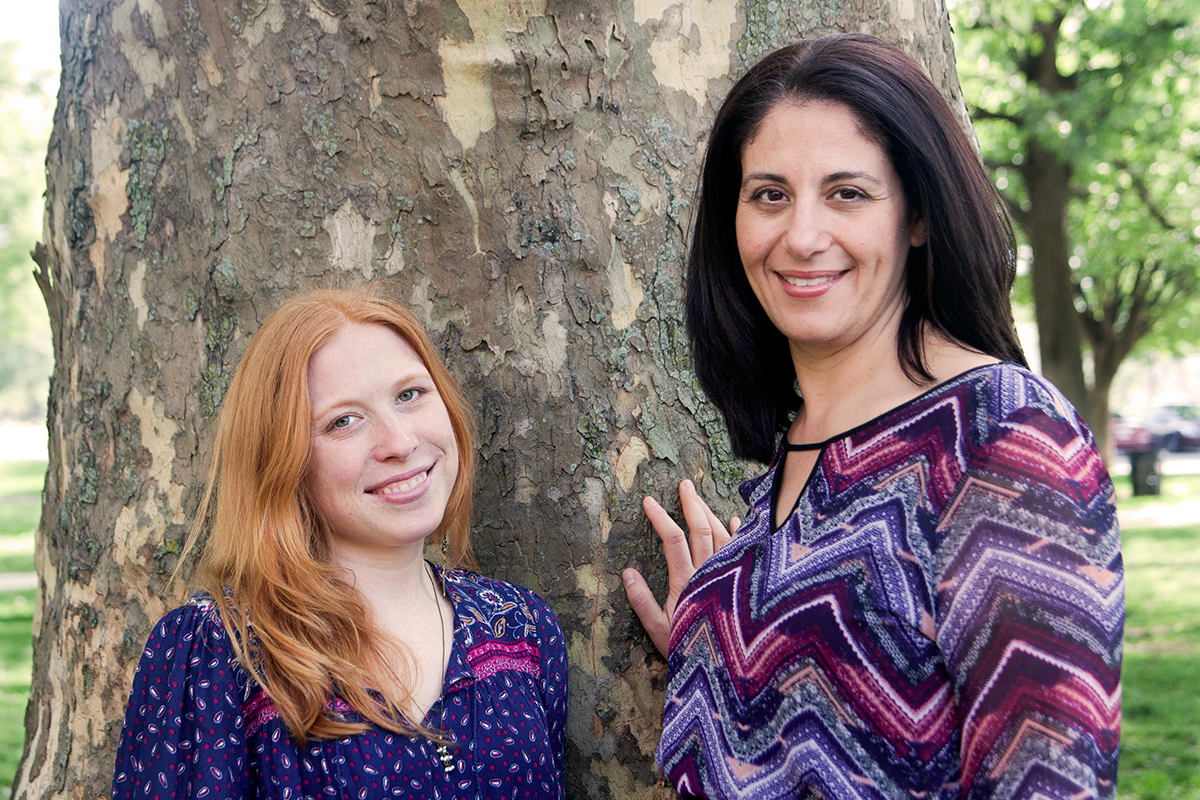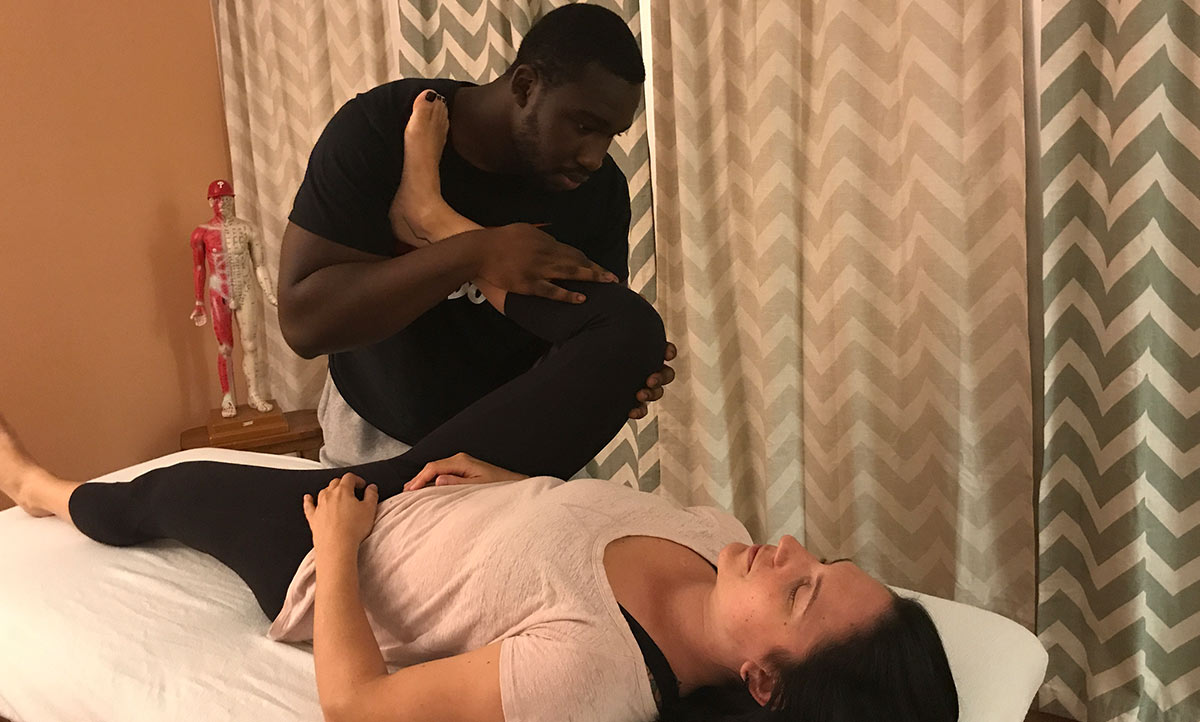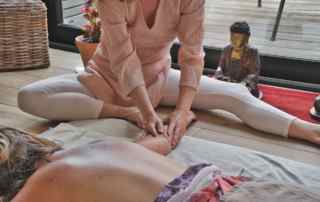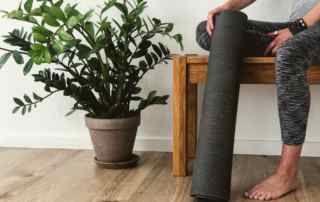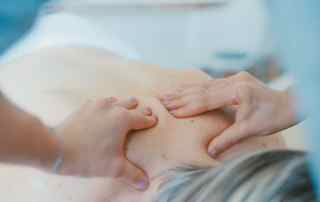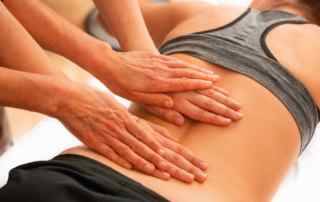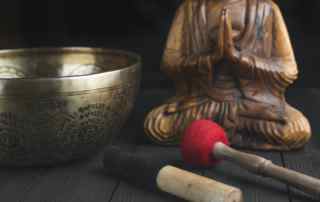Grand Opening of Philadelphia School of Massage & Bodywork
The Philadelphia School of Massage & Bodywork and Blue Alchemy Healing Center will be housed in the lower level of the distinguished Ellington Building, located at 1500 Chestnut St., in center city Philadelphia. Our doors will be open to the public and future students this summer. We’ll be sure to let you know when our program enrollment starts!
Our comprehensive 700 hour massage therapy program will provide students with a quality education with an emphasis on compassionate and professional care. Our well rounded curriculum was created by massage therapists, for massage therapists, and gives students the necessary tools and knowledge to be successful in the field of massage therapy. Sign Up Now.
Watch as we grow! We're starting construction on our space and will keep you updated on our progress. Here’s a peek at our raw space. Our next steps are to build a few additional classrooms and lay down new flooring. Once those projects are complete, we can start painting. Does anyone have any suggestions on paint color? We're open to suggestions :)
Q & A for Massage School Students
Why should I study massage & bodywork?
If you are an independent, caring, compassionate person with a good sense of touch, massage & bodywork might be the perfect career for you. Jobs are open in a variety of environments, ranging from sports and athletics, to hospitals, to spas. Many practitioners are independent contractors, while others are employees of larger businesses. Common characteristics are the desire to help other people and a strong interest in health, nutrition, anatomy, and improving quality of life.em>
Why should I study at PSMB?
Philadelphia School of Massage and Bodywork offers a unique program combining course work with a hands-on clinic, providing students with a great opportunity to work side by side with seasoned professionals. Also, our curriculum is an adult education program so that students can expect to have a moderate workload during studies.
What will massage school cost me?
Massage therapy training is a very cost effective means of entering a career path that is both professionally satisfying and financially beneficial. At $10,000 for tuition and books, the cost is less than one year’s tuition at a private college and most public or community colleges.
How long will it take for me to become certified?
You will be employable in the massage therapy industry in less than one year, if you select the day program, and in 14 months, if you select the evening program.
What’s the career outlook for massage therapists?
According to Money magazine, “The increasing number of spas and massage clinics in recent years underscores a growing demand for massage services. The Bureau of Labor Statistics projects massage therapist employment growth of 22.6 percent between 2012 and 2022, adding 30,000 more professionals to this field.” The Bureau of Labor Statistics reports the median annual wage for massage therapists was $35,920 in 2013. The best-paid 10 percent in the profession made more than $71,020, while the bottom 10 percent made less than $18,280. The top-paying metropolitan areas for this occupation include Anchorage, Alaska; Pittsfield, Massachusetts; and Holland, Michigan.
What are the requirements for admission?
- High School Diploma or GED
- Must be physically able to perform massage
- Valid Photo ID required
- Must be 18 or older
- Complete Application
- Pay a $75 application fee
- Two letters of reference
- Interview with director
- Tour the facility
- Free of communicable diseases
- Receive a massage or bodywork session either at PSMB or another practice
- Be prepared to describe your experience during your interview
What else do I need to know to succeed at your school?
You should know that you get along well with other people, that you have the ability to understand medical and scientific terms, that you are kind and patient, that you have the physical strength to perform several massages a day, and that you are able to listen to your clients so that you fully understand their needs and concerns.
Who will be my instructors?
You can check the instructor page on our website to see our list.
What will be my typical day?
We understand that everyone’s schedule and time availability is different, so we have both a day full time program and an evening part time program. Most days will be a mix of lecture and hands on training with some test taking every so often.em>
Who makes up the student body?
Our students are a diverse group of people who are new to massage therapy as well as those who are onsite for continuing education.
Where will I live while I am in school?
We do not offer any housing.
What subjects will I study?
- Fundamentals of Massage Therapy
- Anatomy, Physiology, and Pathology
- Anatomy of Musculoskeletal Kinesiology & Palpation
- Advanced Massage Techniques
- Complementary Modalities
- Shiatsu for Massage Therapists
- Business
- CPR
You will also participate in the Student Clinic and in our Outreach program.
I am ready to enroll! How do I get started?
Go to our Admissions Page and scroll down to the orange bar that says “ENROLL NOW” and click on that to activate our online registration form. When we receive your info, we’ll call you to discuss your plans.
How do I get more information?
Check our FAQ Page, fill out our CONTACT US form, or call us at 844-344-PSMB (7762)
Why Choose Massage & Bodywork as a Career?
This week marks the opening of the Philadelphia School of Massage and Bodywork! This is a project that my co-founder Julia Bayardi & I have been dreaming of — and working on — for more than three years. But really, it’s been longer than that because we both were drawn to this profession early on in our careers.
In designing this school and outlining the curriculum, Julia & I have talked many times with each other and with our instructors about what makes a good massage therapist or bodyworker, and how each of this came to choose particular path for our own lives.
I know that you may now be wondering if this is the right career for you. And that’s the really most important question for you to answer before you look for a school. When think about your future, where do you see yourself fitting in best in our world of high tech? For me, the answer has been to work in the world of high touch.
During the next few weeks, I’ll be using this space to describe massage and bodywork as a career to you by telling you how our core instructors arrived at their own decisions to join Julia and me at PSMB. As you read about all of us, I would like you to look at what we have in common and, at the same time, take note of the interests and traits you share with us.
I think you’ll be intrigued by what you learn. Yes, we all have a strong commitment to health, nutrition, and healing, but we are also very individualistic in our approaches to our craft and to our clients. I’m sure you’ll enjoy getting to know us, and we look forward to meeting you.
In my next post, I’ll introduce our science instructor Karen Giglio, who is already active in our Blue Alchemy Healing Center.
So you want to be a Massage Therapist
Sick of sitting at a desk all day?
Longing for a line of work that helps others?
A career in massage therapy might be just what the doctor ordered! Massage therapists use their hands, forearms, elbows and more to manipulate the soft-tissue of clients. They provide pain relief, stress reduction, and overall relaxation. Many find the work deeply satisfying. But is it right for you?
What type of person makes a good massage therapist?
When you hear “massage therapist,” what comes to mind? For many, the stereotypical image is a big, burly Swede. In reality, there is no one type of massage therapist. They come in all shapes and sizes, ages and ethnicities.
How physically fit does a massage therapist need to be?
Swedish massage is the foundational technique taught in Western massage schools. While this method does require physical exertion on the part of the massage therapist, the therapist does not need to be a bodybuilder to give a great massage! It is more important that the therapist knows the limits of his or her own body than that they possess brute strength.
In massage school, students learn proper body mechanics to avoid overworking themselves. Many schools advise giving 4-6 massages a day at most to avoid burnout and fatigue. Over the course of a standard massage therapy education, students grow more comfortable with massage techniques, develop muscle memory, and increase their stamina. This learning process takes time. So, while giving one full-hour massage may feel like a major triumph at the beginning of one’s schooling (and it is!), by graduation, students feel competent giving several one-hour massages in a row.
Still concerned about the physical exertion required as a massage therapist? Have no fear: There are over 80 massage modalities in the field! Many of these modalities require less exertion from the massage therapist than Swedish massage. Some gentler modalities include CranioSacral Therapy and Myofascial Release. One can also choose to work with certain populations that require a gentler touch, such as the elderly or children.
What inner qualities should a massage therapist possess?
- Non-judgmental: Massage therapists touch all sorts of people for a living. It is crucial that therapists be honest with themselves about their own biases so that they may offer the same high-quality service to all clients.
- Patient: Not all clients are easy to work with. Some have difficulty verbalizing what they hope to get out of their massage. Others have attitudes that reflect how much tension they carry in their bodies. If irritation arises, a good massage therapist knows to take a deep breath, practice grounding, and move forward with the session, as closely attuned to the needs of the client as possible.
- Empathetic: Massage can be a deeply emotional experience for some clients. A good massage therapist remains heart-centered and attuned to clients’ needs while maintaining professional boundaries.
What are the steps to becoming a massage therapist?
Attend a reputable massage therapy school. Upon graduation, complete the necessary steps for licensing. The licensing process varies somewhat based on where you live. In much of the United States, getting a license involves passing the Massage and Bodywork Licensing Exam, or MBLEx. Information about the exam can be found here.
What is the job outlook for massage therapists?
According to the Bureau of Labor Statistics, the employment of massage therapists is projected to grow 24% from 2016-2026, several times the national average for other careers.
Where do massage therapists work?
Massage settings vary widely depending on the client population and massage therapist’s intended outcome for the massage:
RELAXATION
- Massage studio (franchise or personal studio)
- Spas
- Hotels/Resorts
- Cruise ships
MEDICAL/HEALTH-RELATED
- Hospitals
- Physicians’ office
- Chiropractors’ office
- Nursing homes/Hospice
ATHLETIC
- Fitness centers
- Sports teams
- Sporting events
Some massage therapists also offer in-home massage for clients and/or do on-site chair massages in a variety of settings, such as business offices or at public events.
Getting Started
If all of this sounds good to you, and you feel ready to take the first step toward becoming a massage therapist, congratulations! You’re in the right place.
Philadelphia School of Massage & Bodywork Documentary
Massage class from start to finish!
This short documentary follows seven students of varied demographics and backgrounds as they go through the rigors of learning and training to become licensed massage therapists.
First Massage? Here’s What to Expect During Your Appointment

Getting a massage for the first time can make some clients feel nervous, but there’s no reason to be. If you book a massage appointment with a licensed massage therapist (LMT), you’re in good hands. Here are the answers to the most common questions massage therapists get from first-time massage clients.
How should I prepare for my first massage?
The best thing you can do to prepare for your first massage is to show up roughly ten to fifteen minutes before your appointment begins. This will give you plenty of time to fill out any intake paperwork.
While most massage therapists would prefer if you didn’t come straight from the gym (though sports massage therapists are used to a little more sweat), you don’t need to shower right before your session. Clients sometimes ask if they need to shave their legs before their appointment and the answer is a resounding “No!” If we were uncomfortable with body hair, we’d be in the wrong profession.
What should I tell my massage therapist?
If you have any underlying medical conditions, take certain medications, or have an acute injury, these are good things to include on your intake form. This will allow your LMT to make any necessary modifications to keep you safe. Your massage therapist might also ask you about any areas you’re experiencing pain or tension. What kind of exercise you do or what your job entails can give your massage therapist a better idea of what movements could be causing chronic tension. LMTs are bound by HIPAA so anything you tell your massage therapist will remain private.
Do I need to be completely undressed?
Nope! The number one priority in sessions is your comfort so you can undress to your comfort level or not at all. Your massage therapist will leave the room while you undress and get on the massage table.
Massage therapists are trained to modestly drape clients so only the area being worked on is uncovered. If you need work on your glutes (think: sciatic pain or delayed onset muscle soreness), you may want to undress completely, but your therapist can also use compression techniques over the sheet.
If you’re uncomfortable with undressing during massage, there are several modalities that are highly effective while fully clothed. Thai massage, shiatsu, and chair massage can all be performed with a client wearing loose, comfortable clothing.
What does a massage feel like?
There are as many styles of massage as there are massage therapists, but in general you can expect a massage to include gliding strokes, kneading, and sustained pressure on trigger points or knots. In general, a massage should leave you feeling relaxed and refreshed. A session to treat chronic pain might occasionally feel uncomfortable, but you should never want to jump off the table.
Massage therapists usually ask about pressure during the session but we also love when you speak up. You should never worry about asking for more or less pressure, or asking for more time on a certain area.
What should I do after the massage?
After your appointment, your massage therapist will leave the room and give you time to get dressed. Your massage therapist might provide you with home care instructions depending on what you addressed in your session. You’ll be encouraged to drink plenty of water throughout the day to prevent muscle soreness. A hot shower or bath can also prolong the benefits of your massage.
If you can, give yourself a little time to wake up from “massage brain” before returning to work or other daily activities. You might be so relaxed that a post-massage nap is in order.
3 Reasons Chair Massage Should Be Part of Your Employee Wellness Program

With more employees returning to work and stress levels at an all-time high, chair massage could be the solution to boosting productivity and preventing burnout. Amid The Great Resignation, offering regular chair massage events is a great way to show your appreciation for all the hard work your employees are doing. Here are 3 reasons it should be part of your employee wellness plan.
1. Chair massage can boost employee performance.
Getting back to the morning commute and 9-to-5 schedule has been a big adjustment for many employees. The result is often mental burnout, but chair massage could provide the anecdote. A study conducted at the Touch Research Institute in Miami, Florida found that employees who received a 15-minute chair massage had an increase in speed and accuracy in completing math equations. If you find your staff listlessly staring at spreadsheets by three o’clock, regular chair massage is the perfect addition to your wellness benefits.
2. Chair massage can help prevent common office injuries.
Repetitive use injuries like carpal tunnel are common in office workers—not the mention the low back pain, sciatica, and tight neck and shoulders that come with sitting at a computer all day. Massage can relieve the aches and pains that come from desk work and save your employees countless hours in surgery recover or physical therapy.
3. Stress levels go down after chair massage.
The past year has seen an increased focus on employee mental health, and chair massage can be part of your company’s stress management plan. 10-to-15-minute chair massages have been shown to decrease oxygen consumption, blood pressure, and cortisol levels—all physiological markers of a decreased stress response. If you’ve heard employees talk about feeling “at the end of their rope” or “overwhelmed,” chair massage can alleviate some of the pressure.
Interested in booking chair massage for your Philadelphia office?
We’re happy to help you figure out a plan. Ask about our 2021 October chair massage special for a holiday season discount.
5 Career Pathways for Massage Therapists
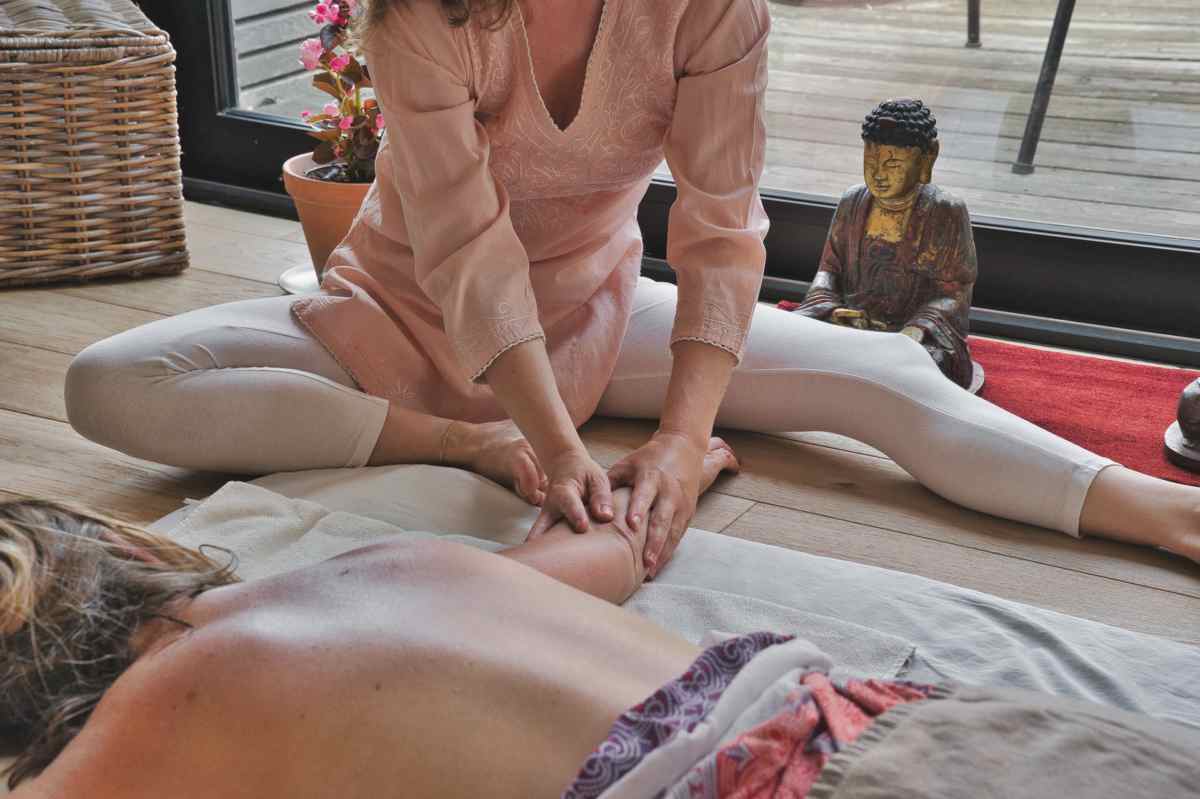
If you’re about to finish massage school or considering enrolling, you’ve probably tried to picture what your career will look like once you’re a licensed massage therapist. Whether you picture yourself helping your clients relax in a soothing spa environment or envision a structured schedule helping patients alongside medical providers, there’s likely a niche that’s perfect for you. Here are 5 common career pathways for massage therapists:
1. Day Spa
Spa environments are one of the more common places massage therapists land, and there are several pros that make it easy to see why. LMTs in spas often work alongside other massage therapists and estheticians and form close connections to their coworkers.
Clients come to day spas for a range of reasons, from needing an hour of pure relaxation to working out muscle tension. If you don’t want to deal with checking in clients, accounting, maintaining the space, and piles of laundry, a spa environment might be a good fit.
While massage therapists often build a steady book over time, starting at a new spa can initially leave you with a few gaps in your schedule. Since you’re paid by the service, a spa might be more stressful for those who need consistency.
2. Medical Settings
If you like having a consistent schedule and paycheck, you’re more likely to find it in a medical environment. From chiropractic offices to assisted living facilities to hospitals, providers are increasingly realizing the benefits of having a massage therapist on staff.
Medical massage gives you endless opportunities to specialize in different niches, including oncology massage, geriatric massage, and lymphatic massage. If you love the science side of massage therapy, you can grow your knowledge by obtaining CEUs with a focus on specific medical massage techniques.
This career pathway won’t be for everyone. If you prefer having longer sessions with clients, you might not find that in medical environments. You’ll be working closely under a provider, so taking direction is key. While massage therapists who specialize in medical massage find fulfillment in helping clients through serious injuries or chronic illness, it might take an emotional toll if you’re unable to compartmentalize.
3. Sports Massage
Sports massage is a great option for massage therapists who love learning about all things anatomy and want to address injuries. Like medical massage, you can continue to hone your knowledge through CEUs. Sports massage can take place in many environments, from mobile setups after marathon races to gyms and health clubs.
Many sports massage therapists are athletes themselves. With the physical strength required to perform some sports massage stretches and techniques, you might need to stay involved in a sport of your own. This isn’t a path for those who like giving lighter pressure massages or who can’t deal with some sweat—but it is a great path for those who like talking to and working with their clients to address goals over time.
4. Mobile Massage
Just as some sports massage therapists travel for games and races, many mobile massage therapists target health and wellness events. Corporate chair massage can provide a steadier stream of income throughout the year. Mobile massage therapists often perform massages in clients’ homes.
If you love traveling and meeting new people, mobile massage might be a good path for you. If you’re less outgoing and like consistency, the unpredictable schedule and louder environments might cause some stress.
Many mobile massage therapists are also self-employed, which means handling client acquisition, transporting equipment, accounting, and laundry.
5. Business Owner
If you don’t mind handling everything on the back end of a massage business—or prefer having full control over your business model and environment—you might be drawn to the independent practitioner career path. With relatively low startup costs and little inventory compared to other businesses, massage therapists are uniquely positioned to branch out on their own.
Once you build your own massage book, you might continue to expand your business by hiring other massage therapists or partnering with an esthetician. Eventually, this could mean stepping back from doing most massages and handling client acquisition, marketing, inventory, and other paperwork instead.
What’s your path?
Some massage students already have their heart set on a certain career path and are ready to jump in the second they obtain their license. Other massage therapists will work in several different environments over the course of their careers. Continuing education courses offer endless opportunities to pursue new interests and build your skill set. Whatever path you choose, your career in massage therapy begins with education.
3 Massage Benefits That Go Beyond Muscles

Most massage clients know just how much better their achy lower back or stiff neck feels after a massage, but there are also benefits that go beyond treating muscle pain and tension. Here are the mental and emotional benefits you might experience during and after a session:
1. Massage can reduce anxiety.
While it’s no surprise that laying in a dark room with calming music for an hour will leave you feeling more relaxed, there’s some science behind why massage helps clients manage anxiety. People who suffer from generalized anxiety disorder have an increased sympathetic nervous system response—think “fight or flight”—which contributes to that on-edge feeling. Massage counteracts this by activating the parasympathetic nervous system, which is your body’s way of calming you down.
2. You might feel less depressed after a massage.
In addition to calming your nervous system, a study from the International Journal of Neuroscience found massage decreased levels of cortisol while increasing dopamine levels by 31% and serotonin levels by 28%. The boost in feel-good hormones and the drop in stress hormones could make massage a powerful tool in a client’s larger depression treatment plan.
3. You’ll get a better night’s sleep.
Whether you’re suffering from chronic insomnia or occasional disrupted sleep patterns, massage can benefit you. Insufficient sleep is associated with numerous chronic diseases and conditions, from psychiatric disorders to lower back pain. Massage can help clients manage these conditions and as a result increase the quality of their sleep.
5 Essential Self-Care Practices for Massage Therapists
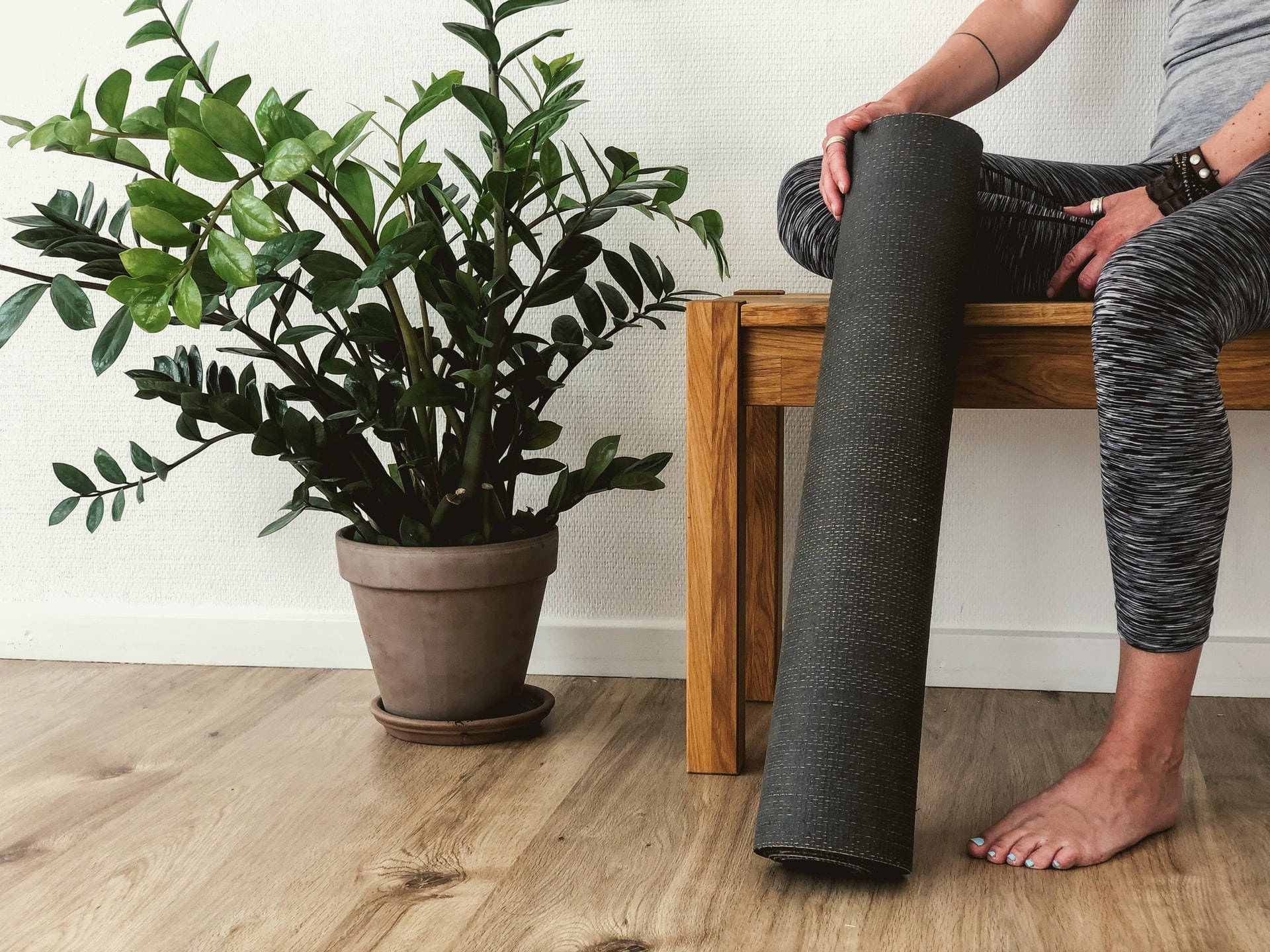
Massage therapy can be a physically (and sometimes emotionally) demanding career, but it’s also incredibly rewarding for massage therapists who love what they do. Self-care is an essential part of longevity in the field and is key to preventing overuse injuries or exhaustion. Here are 5 self-care practices every massage therapist should adopt.
1. Stretching or Yoga
Regularly stretching before and after sessions or getting in a quick yoga session every day is a great way to prevent physical burnout. Practicing yoga can also help you develop an awareness of your body’s abilities and a respect for your body’s limitations. Many yoga poses also mimic good body mechanics during massage sessions.
2. Meditation, Journaling, or Therapy
A couple of minutes of meditation before you see your first client can help you stay present during the session while maintaining emotional boundaries. Journaling at the end of the day can help you decompress from any stressful emotions you experienced and help you recognize positive moments. Some people prefer traditional therapy to help them analyze their emotions and form better habits. Everyone has their own way of dealing with emotional burnout, so use whatever tools work for you to ensure your mind is as healthy as your body.
3. Getting Regular Massages
So many massage therapists fall into the habit of giving their all for their clients without giving back to themselves. If you can’t remember the last time you had a massage, it’s time to set up a trade with a coworker or book a session for yourself.
4. Eating Between Clients
Sometimes a packed schedule can mean you’re going from one client to the next with very little time in between sessions to sit down and eat a real meal. This can leave you exhausted and shaky at the end of the day when you realize you’ve gone all day without fuel. If you need to block out time for a lunch break each day, do it! If you’re comfortable grabbing a handful of nuts, fruit, or a protein bar between clients, make sure you always have extra snacks on hand.
5. Setting Boundaries
It can be hard to turn down a client who wants you to come in on your day off, or to cut off a client who’s always running fifteen minutes late at the time their session is supposed to end. It can also be tough to tell an employer you need more time to change over the table between sessions, or that a scheduled lunch break is a must for you. Knowing what you feel comfortable doing and when you need to take a break might be the most important self-care tool in massage therapy.
These Personality Types Thrive as Massage Therapists
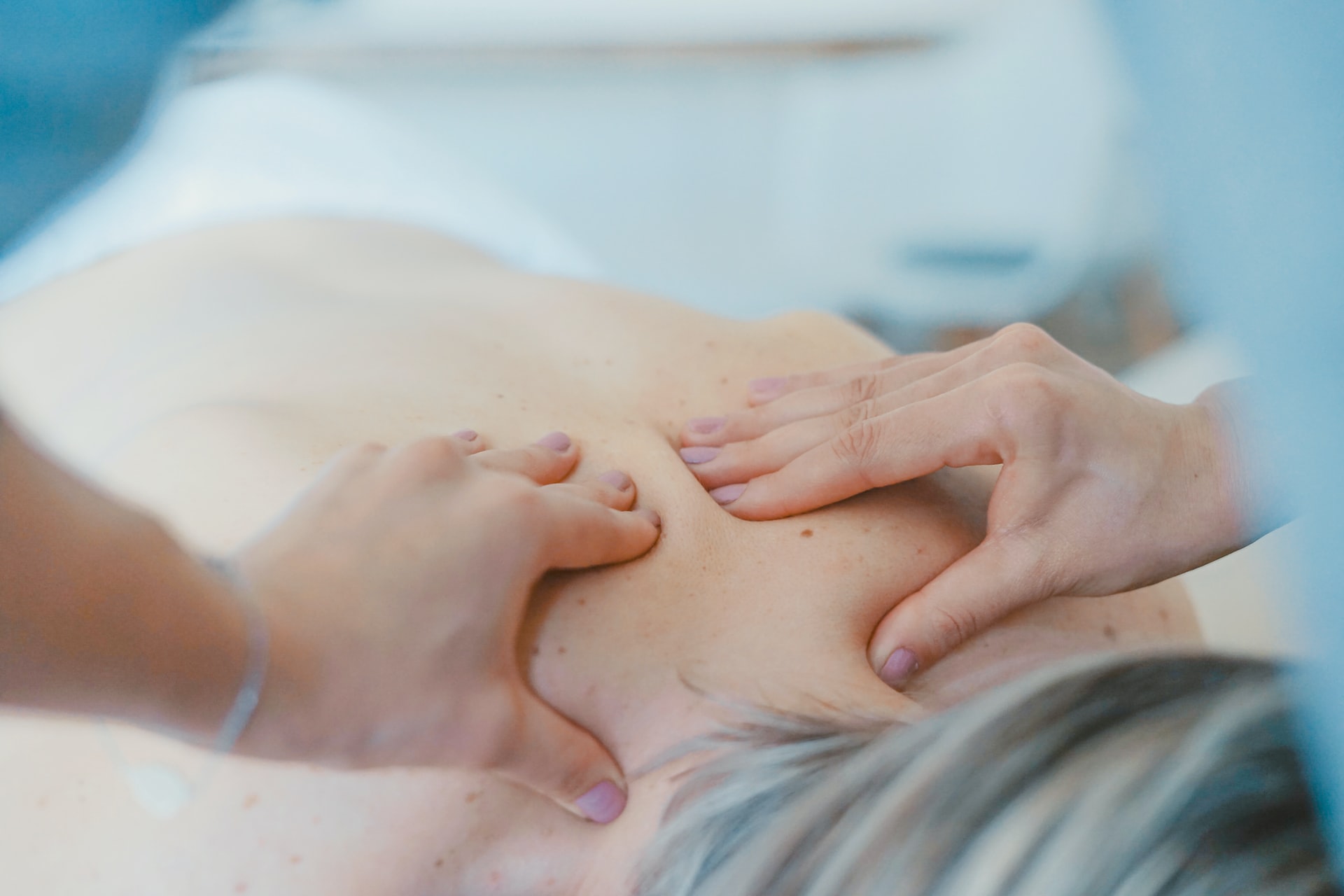
Massage therapy can be an extremely rewarding career. It involves a ton of one-on-one client interaction, problem solving, empathy, and creativity. But it’s not the path for everyone. If you’re wondering whether you’ll thrive as a massage therapist, it might be down to your work style and personality type. These are the kinds of personalities that thrive in as massage therapists.
1. The Service-Oriented Professional
Massage therapy attracts a lot of professionals who need a career change but don’t want to give up on having meaningful jobs. Service-oriented professionals—like nurses, counselors, and veterans—who enjoy giving their all to the people they serve often find fulfillment in helping their clients achieve pain management or relaxation goals. Massage therapy tends to come with less stress than other service professions which gives massage therapists a more manageable work-life balance.
2. The Creative
Massage therapists often have weekend hours and their schedule might look different from week to week. That’s not usually a problem for the creative type. Take a survey at any spa and you’re likely to find a massage therapist (or three) with an art school degree. Massage therapy involves on-the-spot creative problem solving with a heavy dash of empathy, so it’s no surprise that emotive people are drawn to the cathartic feeling of helping their clients.
3. The Introverted People-Person
Massage tends to be a quiet profession. You might spend most of your day in silence if you’re a massage therapist. But that doesn’t mean you don’t connect with clients. Whether you’re talking through their needs during the session, advising them on aftercare at home, or feeling that deep sigh of relief when you finally release their neck tension, massage therapy is a career that’s all about interpersonal connection. Introverts who don’t thrive in retail or restaurant environments but who like forming long-term bonds with regulars are a great fit in this career.
4. The Tactile-Kinesthetic Learner
If you were the kid who was constantly told to sit still in class (and still have trouble sitting at a desk all day), massage might be the perfect fit. A physical profession can give active learners a way to channel their energy and use their strengths. Massage therapy is all about learning by doing. It’s the ultimate anti-desk job.
5. The Athlete
Like tactile-kinesthetic learners, athletes are often drawn to massage for the ability to move their bodies while they work. Athletes might also seek out massage for their own sports injuries and become interested in muscle anatomy to enhance their training. Just like physical therapy, massage therapy is a natural professional fit for active people.
The Best MBLEx Study Guides to Help You Pass the Test

After graduating from massage school, students go on to take the Massage & Bodywork Licensing Examination (MBLEx). Since practicing as a massage therapist depends on passing the examination, it can be one of the most dauting hurdles for most students. But with enough time studying and applying what you’ve learned in school, there’s nothing to fear. Here are the best MBLEx study tools to help you take the test with confidence.
1. MBLEx Test Prep by David Merlino, LMT
If you like to do your studying without the distraction of the internet, a test prep workbook like David Merlino’s study guide is a must. This comprehensive volume reviews pathology, anatomy, and physiology as well as business and ethics. There are more than 700 practice questions, crossword puzzles, and matching assignments to help you prepare. Students with test anxiety will also benefit from the study skills and test-taking techniques covered in this workbook.
2. MBLEx PocketPrep
This MBLEx app is built for the busy student. If you need to squeeze in studying between your job and school, PocketPrep will be your go-to tool. The well-designed app has quick questions of the day when you only have a few seconds to spare, 10 question quizzes, and timed quizzes. You can even review missed questions or focus on your weakest subjects.
3. ABMP Exam Coach
Associated Bodywork & Massage Professionals has one of the best MBLEx study guides for visual learners. ABMP Exam Coach will take you through test prep questions, but if you struggle with origins and insertions until you actually see how they work, it’s worth investing in Exam Coach Plus for the Five-Minute Muscles web app.
What is it like to go to massage school?
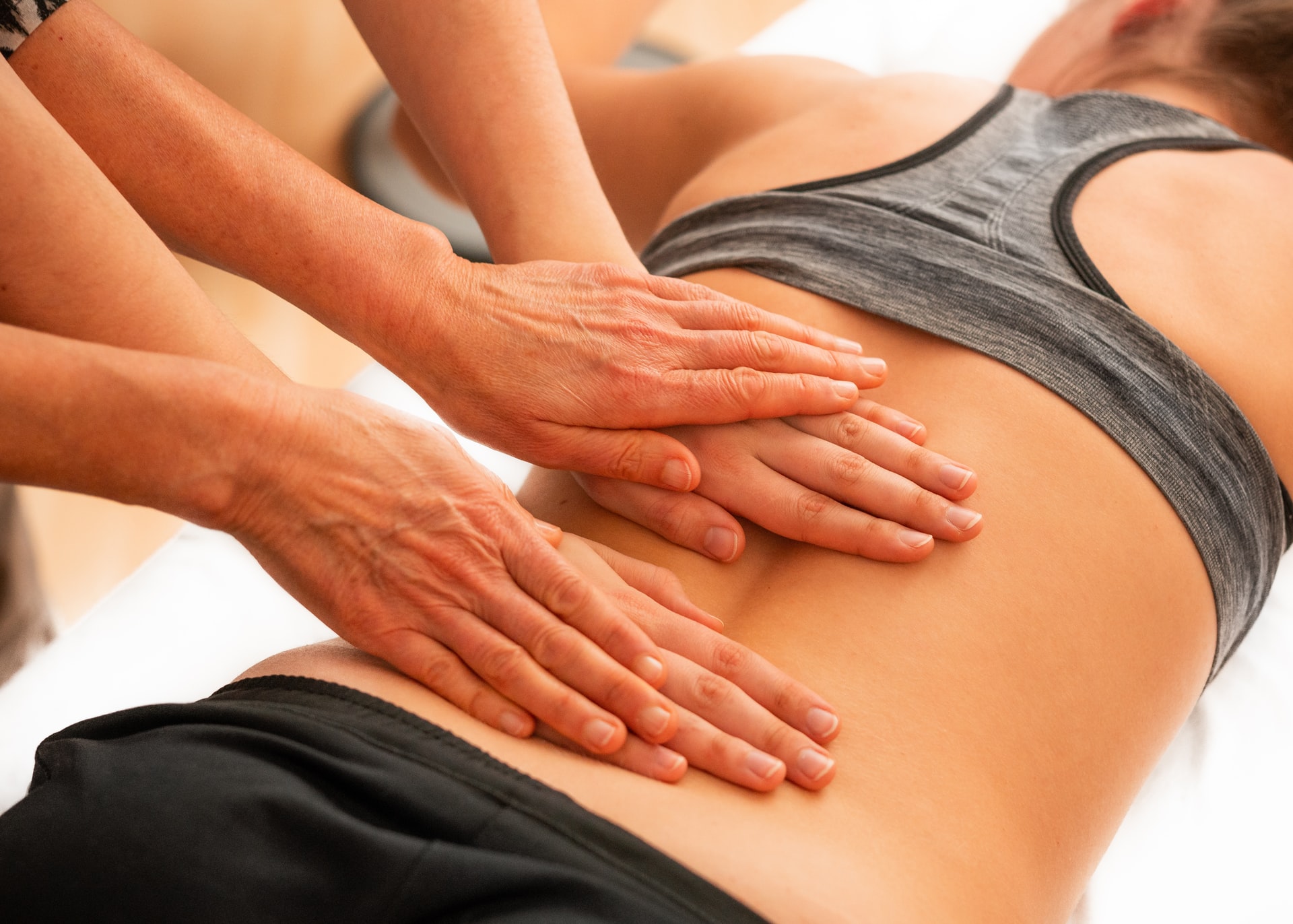
If you’re considering a career in massage, applying at a massage school is the first step. If you’re wondering what the day-to-day looks like for massage students or how going back to school will fit into your schedule, here’s what you need to know.
How long does massage school take?
In Pennsylvania, the requirements for licensed massage therapists are 600 hours of education at a post-secondary school and passing the MBLEx. Courses are usually completed within 8 to 9 months.
Can I work while I go to school for massage?
Yes! Many massage therapists are in their second (or third, or fourth) careers. Most massage schools, including Philadelphia School of Massage and Bodywork, offer night classes so you can continue working while you start your path toward becoming a massage therapist.
What do you study in massage school?
Accredited massage programs combine hands-on techniques with a background in the science and history of massage. At Philadelphia School of Massage & Bodywork, students learn the foundations of Swedish massage, relevant anatomy, physiology, and pathology, advanced techniques, complimentary modalities, and the business and ethics of massage therapy. Students also get hands on experience working with a range of clients in the student clinic.
What are the requirements for massage school?
Admissions requirements for massage school usually include a high school or college diploma or GED. Prospective students should be over 18 years old. At PSMB two letters of recommendation (from a friend, colleague, or classmate) are also required. You’ll also need an up-to-date TB test.
To complete massage school, you’ll need to be able to physically perform massage. If you have a physical disability, reach out to the massage school’s program director to discuss accommodations. Many massage modalities (like craniosacral therapy) require very little physical strength while being incredibly healing to clients.
How much does massage school cost?
Most massage therapy programs range from $10K to $15K. Philadelphia School of Massage offers payment plan options and accepts GI Bill benefits.
What are classes like in massage school?
Massage school classes range from hands-on practice to lectures and demonstrations. Massage students practice new techniques on each other or their teachers. Some reading is required between classes to cover the history, anatomy, physiology, and pathology included on the MBLEx.
You can get a better idea of what classes look like by watching PSM&B students at work.
We love these yoga routines for massage therapists
Self-care is essential for a long massage therapy career, and that includes doing all those stretches you keep suggesting for your clients. These yoga routines target the areas massage therapists use most and help prevent repetitive use injuries.
Yoga for Hands, Fingers, and Wrists
YouTube yoga favorite Adriene Mischler has dozens of quick yoga routines that are easy to incorporate into a busy day, but this 11-minute video should be on every massage therapist’s weekly rotation. The simple stretches focus on the delicate muscles in the hands, fingers, and wrists to prevent burnout for these overworked areas.
Yoga for Core and Hips
Arianna Elizabeth has a huge range of yoga classes on her channel, from power yoga that will make you sweat to relaxing yoga and meditation sessions. This 30-minute core and hips routine is amazing for massage therapists since it will help you build strength and stability (and take some of the pressure off of your upper body). A strong core and hips make good body mechanics so much easier.
Yoga for Rounded Shoulders
On her Yoga Song channel, Song Hayeon addresses one of the most common issues plaguing massage therapists (and our clients): rounded shoulders. This video clocks in at 9 minutes but is packed with chest opening and neck releasing stretches that reverse the posture many massage therapists fall into while they work. It’s also a great video to talk about with your tech-neck suffering clients.
These massage playlists will break up the elevator music monotony
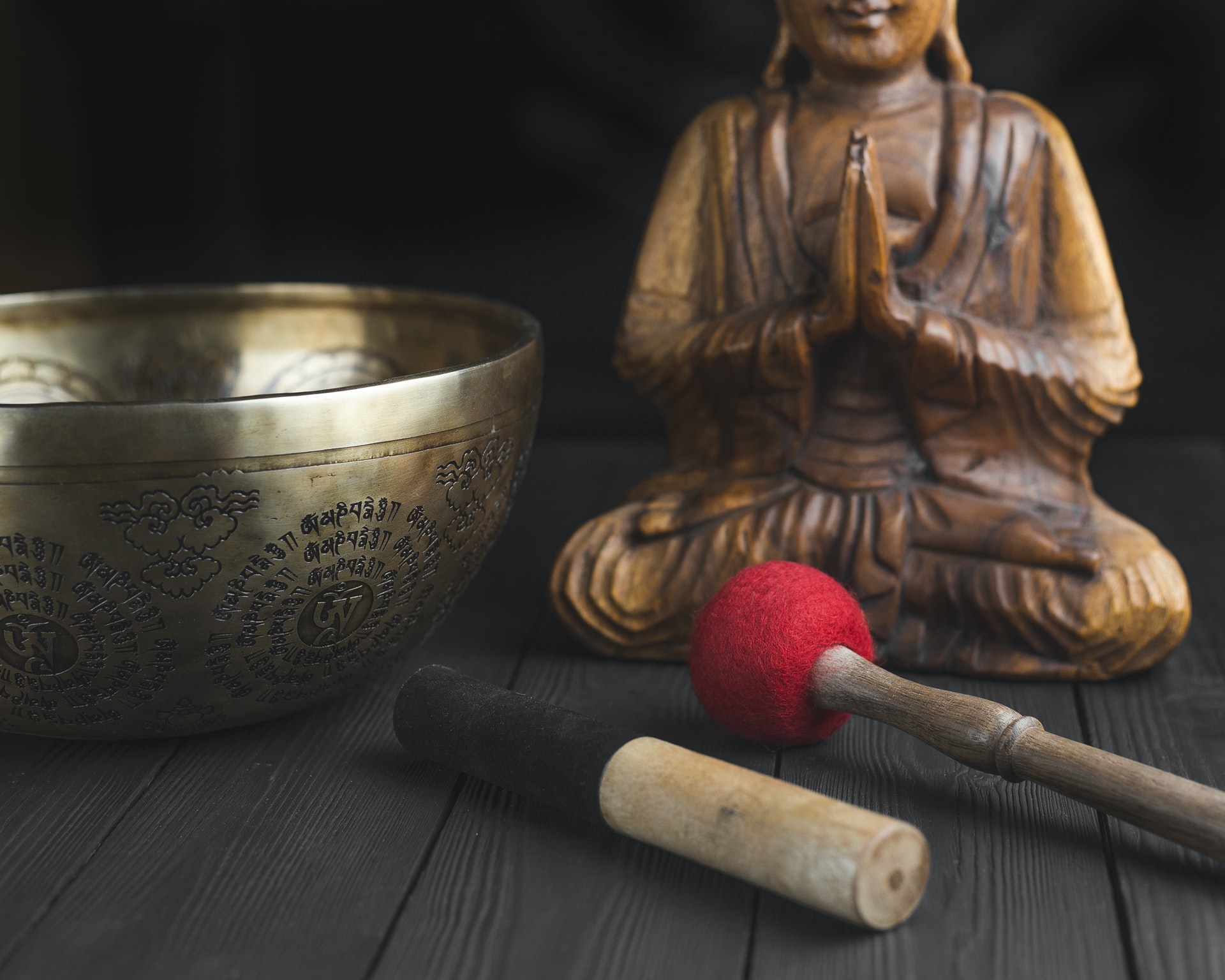
If you’ve been listening to the same lilting flute music for months, you’re probably about to lose your mind the next time you hear a tinkling wind chime. Adding some new music to your rotation can help you get into the zone and stay present for your clients. Here are some meditative massage playlists to add to your mix.
Eclectic Chill
This alternative playlist features everything from folky songs by William Ryan Fritch to ambient songs from Aphex Twin. At twenty-one hours long, you’ll never hear the same song twice in one day.
Lo-fi and Hip Hop Beats
This playlist is the ultimate cure for Massage Tribe burnout. Eleven hours of low-fi, jazz, electronica, and hip hop beats will help you get into the perfect rhythm and make the day fly by.
Instrumental Covers
If you never thought you’d do a massage to Radiohead’s “Creep” it’s time to think again. These instrumental covers are as relaxing as they are entertaining.
Massage Music with Vocals
Playing music with vocals can be distracting for some clients, but you can always ask your regulars about their music preferences. Some might prefer a playlist with calming vocal tracks. This one features indie artists like Cat Power and Iron & Wine.
Curious about cupping therapy? These are the benefits.
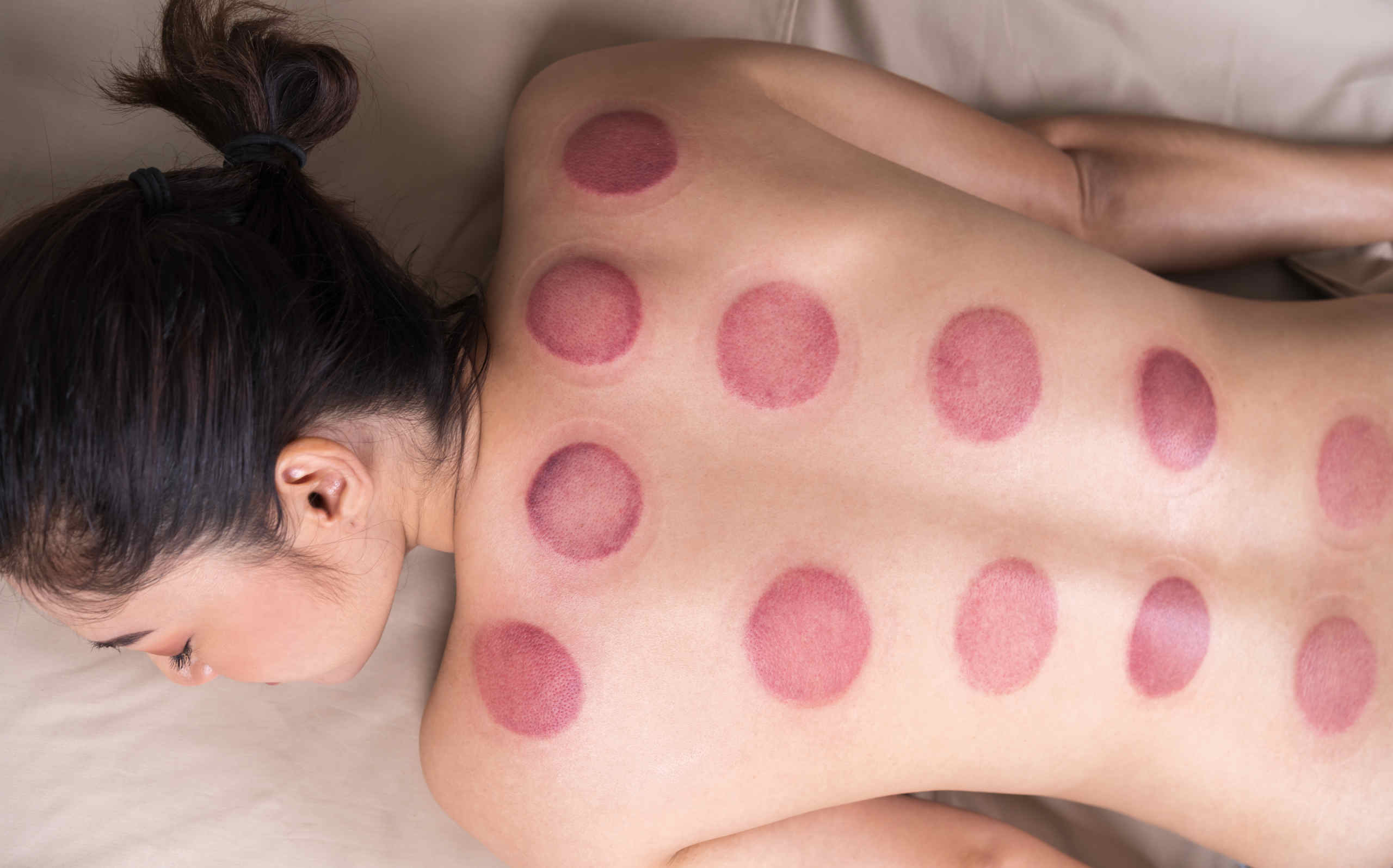
Cupping therapy has been performed for thousands of years, dating back to ancient Egyptian, Middle Eastern, and Chinese cultures. There’s a reason this unique form of bodywork has stuck around for so long. Today cupping is practiced around the world treating everything from tight muscles on Olympic athletes to inflamed joints from rheumatoid arthritis. Here’s how cupping could help you.
Cupping can relieve pain that traditional therapies don’t.
If you’ve tried everything for a chronic injury, from physical therapy to deep tissue massage to pain medication, cupping might be the best way to help your body heal. Suction from cupping causes tiny capillaries under the skin to break, causing the body to react to the treated area as it would an injury. Your body then sends more blood to the area to encourage the healing process. For stubborn chronic pain, it might be the boost your body needs to treat an old injury.
Cupping increases circulation and helps athletes heal faster.
This therapy is a favorite of athletes like Michael Phelps thanks to its effectiveness in shortening healing time after strenuous training. Cupping increases circulation to tired muscles and treats tight fascia, so it’s ideal for sports recovery. It’s not just Olympic athletes who can benefit—cupping can also help you recover from that grueling barre class.
Cupping could improve scars or stretch marks.
This might seem counterintuitive since cupping leaves those distinctive red circles at first. But over time cupping therapy can have positive effects on stretch marks and scars. By increasing blood flow and improving lymphatic circulation, cupping can help old scars improve. This is especially useful for surgical recovery since the positive effects were observed even when cups were applied in areas far away from the scar.
Should I get a cupping massage?
Cupping is generally safe, but if you have certain conditions cupping might not be right for you. If you’re on blood thinners or have thin skin, a gentler massage modality is best. Certain conditions like rheumatoid arthritis can benefit from cupping, but not while the client is having an active flare-up. If you have a chronic condition, always check with your doctor before any kind of bodywork.
Should I learn cupping?
If you’re a massage therapist, the benefits of cupping go beyond better serving your clients. It’s a great therapy to learn if you specialize in sports massage since it’s popular with athletes. You can also avoid burnout by adding cupping to your practice since it requires less physical exertion. As a therapy that’s less widely practiced but has a lot of devotees, cupping can help you carve out a niche market.
Want to learn cupping now? Sign up for a cupping continuing education course in Philadelphia. The 8-credit hour course will be held February 13th 2022 and includes a cupping set in the $195 tuition. Reserve your spot in Cupping Level 1 by emailing dmzadie@phillyschoolofmassage.com

